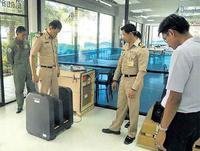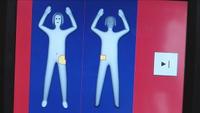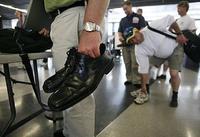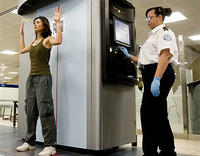-
Decontaminating radiation-laced water at Fukushima Daiichi
Thanks to special radiation devices, made by UOP LLC, a Honeywell company, cleanup crews in Japan have been able to treat five million gallons of water contaminated by radiation at the Fukushima Daiichi nuclear power plant
-
-
Sector Report for Monday, 5 December 2011: Detection
This report contains the following stories.
-
-
Safer fertilizer technology

Honeywell will build a facility in California to produce a fertilizer with the agronomic benefits of traditional nitrate-based fertilizers, but with significantly lower explosive potential; the new fertilizer was independently tested, with guidance from the DHS and the Bureau of Alcohol, Tobacco, Firearms and Explosives, and demonstrated significantly less or no explosive power
-
-
U.S. deploys radiation detectors in Chinese port
As part of its ongoing efforts to secure terrorists from attacking the global shipping system via cargo container, the United States recently reached an agreement to deploy radiation scanners at the world’s largest container processing port in Shanghai
-
-
Inmates help train bomb-sniffing dogs
In an interesting turn of events, prison inmates are being used in a pilot program designed to train future law enforcement officers; inmates at the Panama City- Bay County jail will help train two future bomb-sniffing dogs
-
-
Wearing shoes at airport checkpoints could be a new reality

As part of its continuing efforts to make security procedures at airport checkpoints easier for travelers, the Transportation Security Administration (TSA) is actively seeking technological solutions that would allow passengers to keep their shoes on
-
-
Graphene foam detects explosives better than gas sensors
Researchers demonstrate that graphene foam can outperform leading commercial gas sensors in detecting potentially dangerous and explosive chemicals; the discovery opens the door for a new generation of gas sensors to be used by bomb squads, law enforcement officials, defense organizations, and in various industrial settings
-
-
Study promises possible therapy for radiation sickness
Studies of potential radiation therapies suggest they would be effective in humans only if administered within a few minutes or hours of radiation exposure, thus making them impractical for use in response to events involving mass casualties; the larger time window for administering a new 2-drug regimen ofeers the prospect that it could become a mainstay of the response to public health threats such as a nuclear power plant accident or nuclear terror attack
-
-
TSA chief says no new study needed on airport body scanners

Weeks after agreeing in principal to an independent study on the health effects of full-body scanners, TSA administrator John Pistole told the Senate Committee on Commerce, Science, and Transportation that a new study is not needed to confirm the machines’ safety
-
-
Source of mysterious European radiation found
The International Atomic Energy Agency (IAEA) believes a Hungarian factory producing medical isotopes is the source of the mysterious radiation that has been detected across Europe; beginning four weeks ago, trace amounts of iodine-131 were detected by several countries including Austria and the Czech Republic
-
-
Examining shoes for trace amounts of explosives – discreetly

NIST has been developing a prototype shoe sampling system that relies on aerodynamic sampling as the primary mechanism for liberating, transporting, and collecting explosive contamination
-
-
Sector Report for Monday, 21 November 2011: Detection
This report contains the following stories.
Plus 1 additional story.
-
-
Europe bans the use of backscatter body scanners
In its approval of full body scanners for use at airports last week, the European Union banned the use of scanners that relied on backscatter radiation due to safety concerns; these types of scanners are widely used in the United States and have been source of sharp criticism, yet the Transportation Security Administration (TSA) has continued to insist that they are safe
-
-
DNDO progressing on Helium-3 alternative
DHS is one step closer in its quest to find an alternative to Helium-3, a key element used in radiation scanners that detect illegal nuclear or radiological materials; DHS’s Domestic Nuclear Detection Office (DNDO) recently announced that it had completed its final analysis on Helium-3 alternatives
-
-
EU to allow full-body scanners at airports

In response to the continued threat of terrorism, the European Union (EU) recently passed legislation that would formally European airports to use full-body scanners; prior to Monday’s announcement, trial usage of full-scanners was limited to a period of thirty months; under the new rules, member states will have the option for unlimited deployment of the scanners, but will not be required to use them
-
More headlines
The long view
Keeping the Lights on with Nuclear Waste: Radiochemistry Transforms Nuclear Waste into Strategic Materials
How UNLV radiochemistry is pioneering the future of energy in the Southwest by salvaging strategic materials from nuclear dumps –and making it safe.
Model Predicts Long-Term Effects of Nuclear Waste on Underground Disposal Systems
The simulations matched results from an underground lab experiment in Switzerland, suggesting modeling could be used to validate the safety of nuclear disposal sites.
